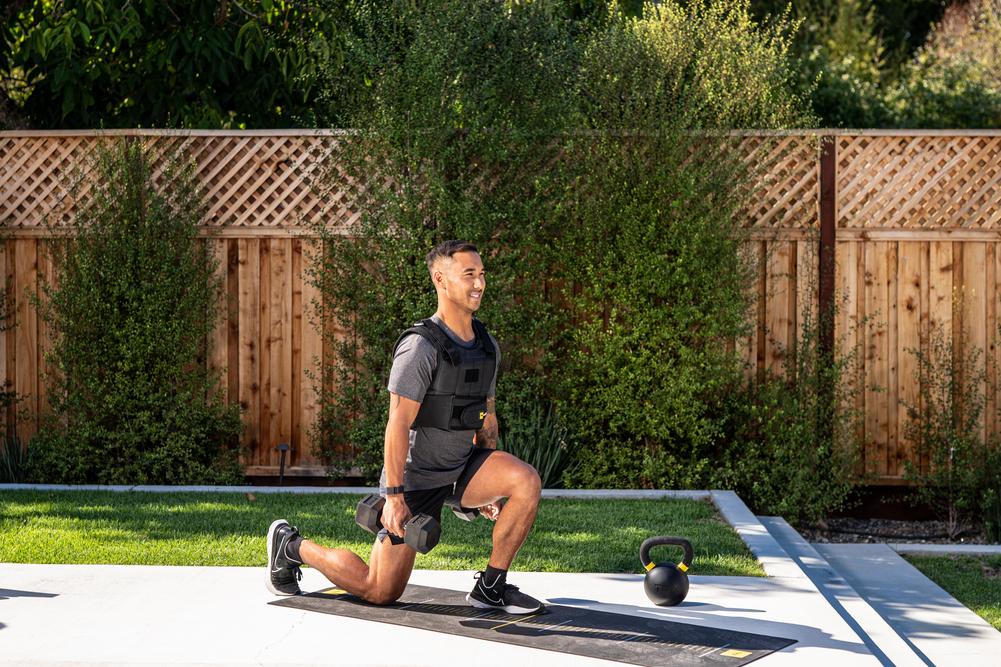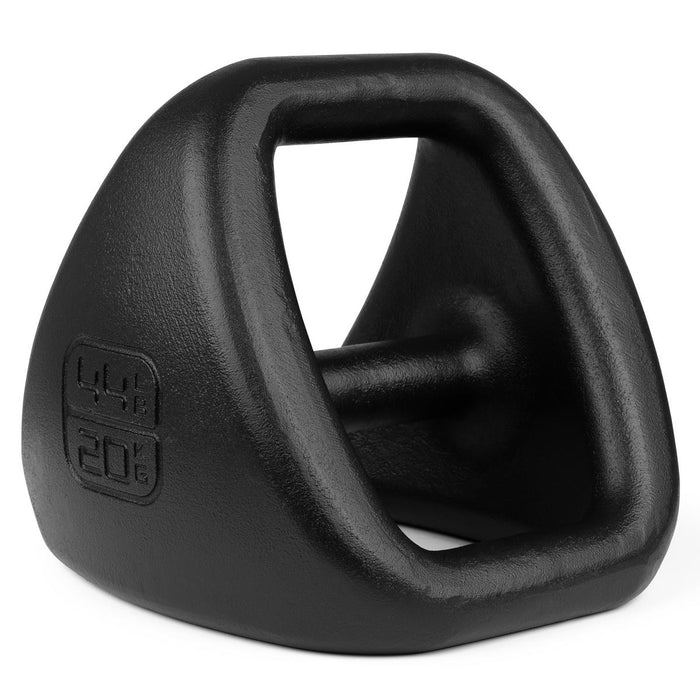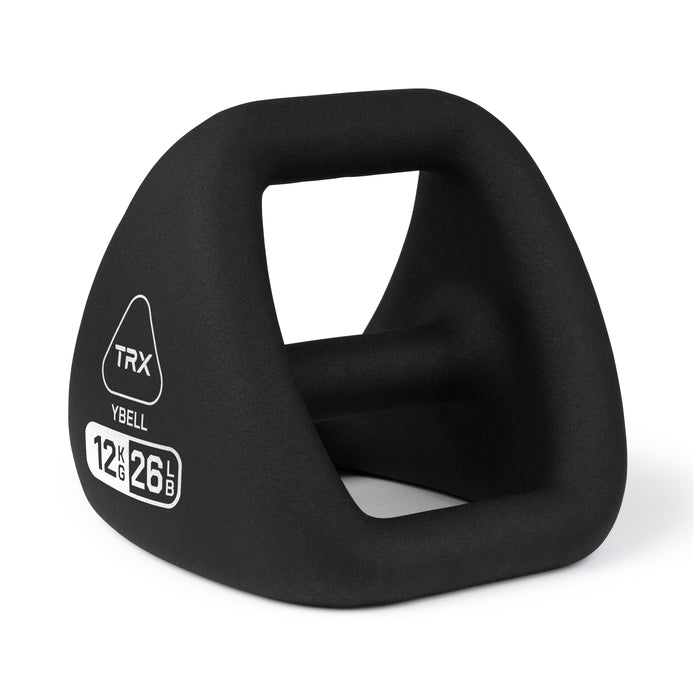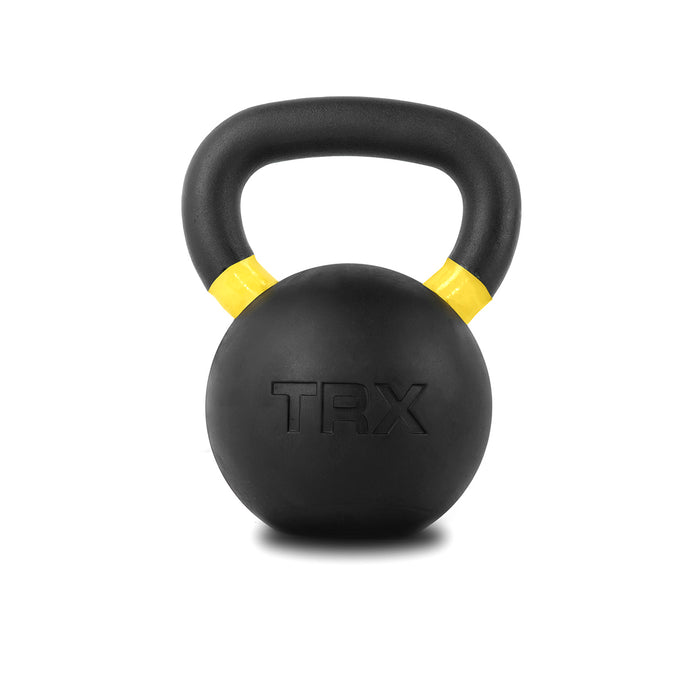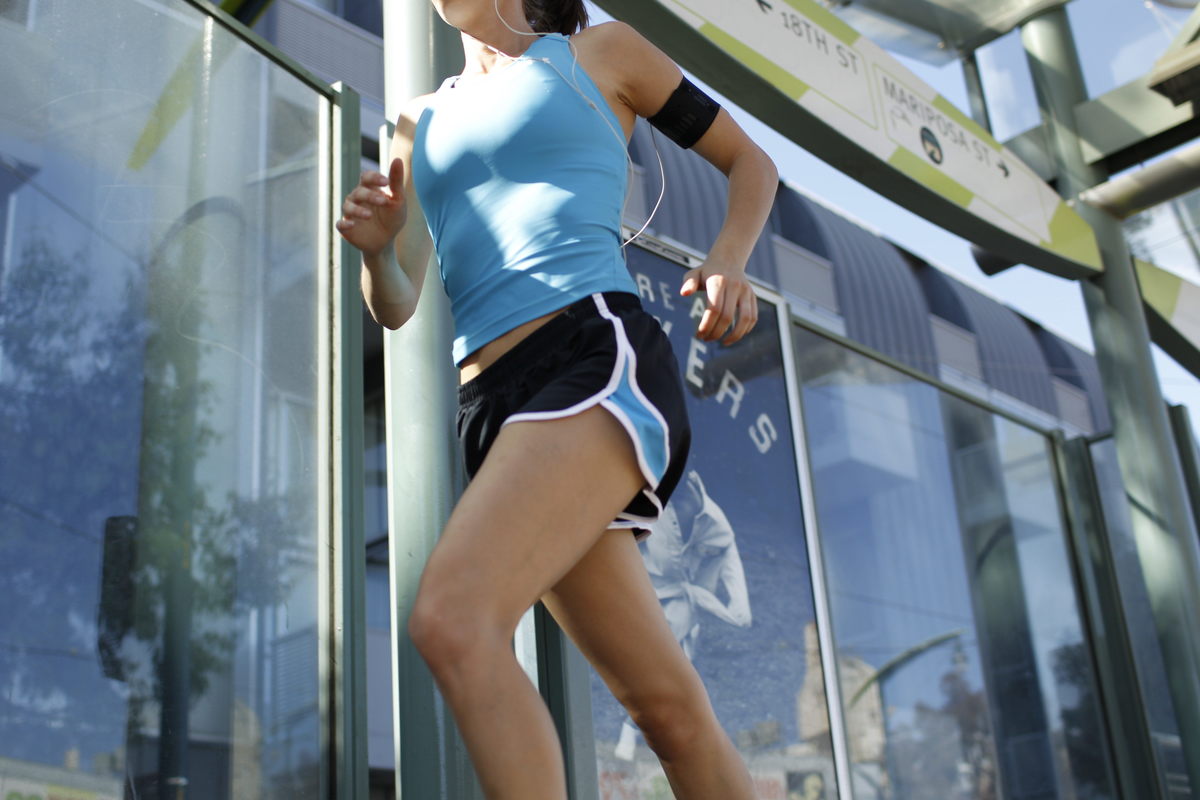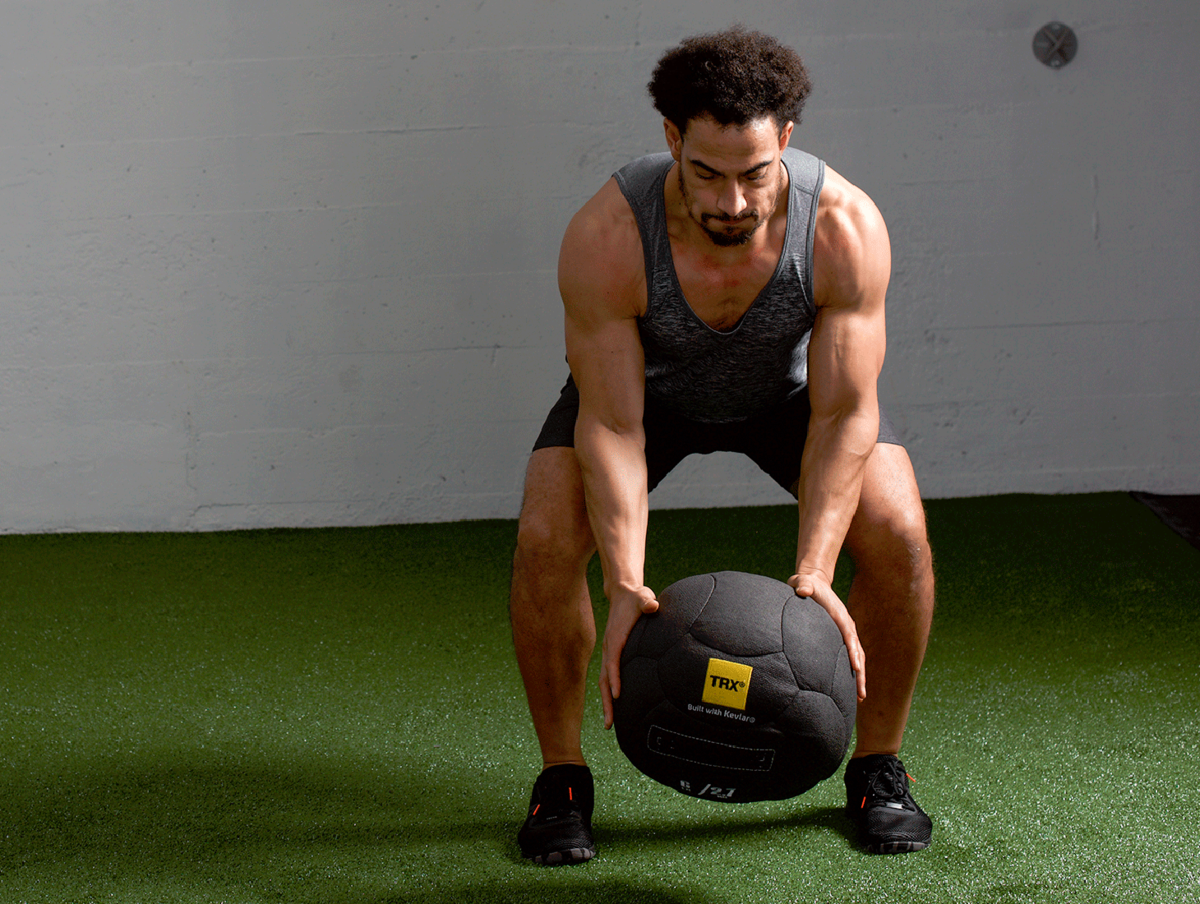You probably don’t think about your quads much until you try to stand up after leg day. Nevertheless, they’re one of the most fundamental muscles in your lower body. Today, we’ll look at a ten dumbbell quad exercises you can do to build this area of your legs.
First, let’s take a look at the anatomy of the quads and some benefits that come with training this muscle group.
The Anatomy of the Quads
The quadriceps muscles, also known as "quads," are a group of four muscles located in the front of the thigh. These muscles include the rectus femoris, vastus lateralis, vastus medialis, and vastus intermedius.
Each of these muscles has a unique function, but they work together to produce movement at the knee joint. The rectus femoris is the only quad muscle that crosses the hip joint, making it responsible for both hip flexion and knee extension.
The vastus lateralis, vastus medialis, and vastus intermedius all play a role in knee extension, with the vastus medialis also contributing to knee stabilization. When these muscles contract together, they create a powerful force that allows you to run faster and jump higher.
Understanding the anatomy of the quads and how they work together can be beneficial for anyone looking to get the most from their workouts. Plus, strong quads can help improve your overall athletic performance and reduce your risk of injury.
Benefits of Training Your Quads
There are plenty of reasons that you want to exercise your quads. Here are the five main benefits that you can reap from training this muscle area.
Improved Aesthetics
Quads are more than just a muscle group. They're the secret to a balanced body composition and strong, sturdy legs. Training your quads will increase the muscle mass and create more defined legs.
Increased Lower Body Strength
Your quads work in conjunction with your hamstrings, glutes, and calves to move your body and generate power. When you train your quads, you not only strengthen this muscle group but also work out the supporting muscles in your lower body.
Improved Quality of Life
By training your quad, you're improving your overall fitness level, which can lead to a plethora of benefits. Training your quads can boost your metabolism, burn fat, and increase overall energy levels. You’l lalso be able to fix your posture and lift heavier objects.
Increased Upper Body Strength
Exercising your quads requires stability and balance, which are both essential for upper-body exercises like overhead presses and rows. The added strength in your legs will give you a solid foundation to push off of and engage your core muscles during upper-body movements. Try to remember this next time you want to skip leg day. Your upper body will thank you for it!
Become More Athletic
In most sports, having strong and well-developed quads can help you become more agile, powerful, and faster. The quadriceps muscles are responsible for extending the knee joint, which is crucial for movements such as sprinting, jumping, and kicking a ball.
By strengthening your quads, you can generate more power in your legs and move faster. In addition, well-developed quads can help prevent injuries, especially in sports that require sudden changes in direction or quick stops and starts.
The 10 Best Quad Exercises With Dumbbells
10. Goblet Squat
The Goblet squat will help to improve your hip mobility, all while strengthening your core and upper back. This is a great way to train with resistance to build your quads and glutes without having to use heavier barbells to increase weight.
Here’s how to do a Goblet squat:
- Set your feet slightly wider than hip-width apart, with your toes slightly turned out.
- Hold your kettlebell in front of your chest by the side of its handles.
- Keep your elbows tucked in and your spine neutral.
- Squat by sending your hips back and bending your knees, as you keep your torso upright.
- Keep your knees tracking outside your middle toe throughout the movement.
- Pause at the bottom of your squat and make sure your heels remain grounded throughout.
- Drive from your feet to stand up, returning to the start position to repeat.
Tip: Aim to bring your elbows inside your knees if your mobility allows, working your full range of motion without compromising form.
9. Split Squat
Compared to exercises like the Bulgarian split squat, the split squat uses a more stable position because both feet are in contact with the floor. This unilateral exercise will increase single-leg strength and help to rectify any musical imbalance between the left and right sides. As a result you’ll also see gains in your bilateral lifts since there will be less compensation from a more dominant side.
Here’s how to do a split squat:
- Stand in a split-leg position, imagine your feet are on two train tracks to aid balance.
- Brace your core and avoid rounding your spine.
- Bend your knees to lower your hips
- Pause at the bottom, working to your full range of motion
- Stand back up to return to the start position and repeat.
Tip: Watch the traction of your front knee, by aligning the knee to track outside the middle toe you’ll avoid knee buckling which is a common fault in split squats and essential to learn if you want to progress to lunges.
8. Dumbbell Sumo Deadlift
If you’re looking to improve your hip's range of motion, whilst lessening any pressure on your lower back and knees, then this is the exercise for you. Targeting the quads, glutes, inner thighs, and hamstrings, this compound exercise uses a wide stance to develop hip mobility and flexibility.
Here’s how to do a dumbbell sumo deadlift:
- Set your feet wider than shoulder-width apart with your toes slightly turned out.
- With your feet on either side of your dumbbells reach down and grip the handles of the weights, keeping your arms inside your legs to maintain a straight back.
- Brace your core to protect your back. Extend your hips and knees to stand upright
- Hinge at the hips and bend your knees to return the weights to the floor and repeat.
Tip: Keep the work in your glutes rather than putting pressure through your knee joint, by tracking your knees outside your middle toe throughout the movement.
7. Dumbbell Single Leg Squat
One of the most difficult single-leg exercises to perfect is the dumbbell single leg squat. The single-leg squat is an advanced movement requiring exceptional balance and mobility. You can incorporate resistance, but it is mainly used to counterbalance the wide range of motion in the exercise.
- Holding your weight close to your chest, stand on one leg and fix your gaze straight ahead.
- Bent at the knee and flex the hip to lower your body towards the floor, working your full range of motion.
- Keep your free leg elevated away from the floor throughout the exercise.
- Pause at your end range before driving through the standing leg to return to the start position and repeat for your desired rep range on both sides.
Tip: Holding the handles of the TRX suspension trainer will provide support to improve your balance and build confidence as you explore and improve your range of movement.
6. Dumbbell Forward Lunges
The lunge is very similar to the split squat but it adds the challenge of requiring the lifter to move dynamically under load. This is beneficial not only for athletic development and hypertrophmy but also for functional fitness as it relates to daily activities like walking uphill. Perfect your form from a stationary position before moving onto the lunge. This will prevent any unnecessary injuries and reduce stress on the knee joints.
Here’s how to do dumbbell forward lunges:
- Select your weight, holding one dumbbell in each hand or a singular dumbbell close to the chest.
- Begin in a standing position with feet hip-width apart.
- Stride forward, as your foot lands, and bend both knees to lower your body.
- Press from the front leg to return to the start position and repeat.
Tip: In terms of motion, travel down and up in the lunge rather than forward and back
5. Step Ups
Suitable for all abilities, the step-up is a unilateral strength exercise that can improve joint stability of the knees, hips, and ankles. By altering the platform height, the degree of knee and hip flexion can be manipulated to alter what muscles you focus on. Lower height platforms are perfect for rehabilitation from injury. Meanwhile, using a taller platform allows the lifter to work through the fullest range of motion for muscular hypertrophy.
- Bring one foot onto the platform, firmly pressing through the foot and finding a stable start position
- Drive off the elevated leg to a standing position, avoid pushing off the foot on the floor for assistance
- Slowly lower back to the start position and repeat.
Tip: Try using a TRX for support, adjusting the handle and positioning the straps in line with a platform provides support for the lifter to focus on lowering slowly from the platform with control. This focus on eccentric contraction will help to build strength.
4. Single-Arm Hang Snatch
The single-arm dumbbell snatch is a total body, compound movement that is great for athletic development because it focuses on powerful hip extension. Learning triple extension of the hips, knees, and ankles will lead to increased power, strength, and coordination.
- Stand with your feet shoulder-width apart, toes slightly out turned, either side of your dumbbell.
- Squat down and with an overhand grip grab the dumbbell with your palm facing your body.
- Brace your core, and keep your arm straight.
- Use an explosive drive to triple extend at the ankles, knees, and hips. As you reach full extension, shrug your shoulders.
- Flex the elbow and drop your body beneath the weight of the dumbbell into a quarter squat position.
- Catch the dumbbell in an overhead position and stand up to finish the rep.
- Return to the start position by lowering the dumbbell with control, reset, and repeat.
Tip: Use your free arm to aid balance.
3. Dumbbell Lateral Lunge
Improving your mobility will help increase your injury resilience which makes this a great pre-run mobilization exercise. By adding resistance with dumbbells, you’ll also build strength, making it an excellent functional move. In terms of muscles, this exercise targets your quads, adductors, and glute medius, which is an important muscle for hip stability.
Here’s how to do a dumbbell lateral lunge:
- Start by standing tall with your feet under your hips. Hold one dumbbell per hand with your arms by your sides.
- Take a big step to the side, keep your hips square, and bend your knee as you sit your hips back
- Maintain core engagement to keep your torso upright, and avoid excessively leaning forwards or rounding through your spine.
- Extend at the hip and knee to stand tall, push off your foot to return to the start position, and repeat.
Tip: If you struggle with balance, take out the dynamic element and keep your feet wide. Turning this into a lateral squat will help you to build strength and stability. Then when you’re ready add the challenge of moving dynamically
2. Dumbbell Hack Squats
The dumbbell hack squat is a great variation if you don’t have time to hit the gym or don’t have access to expensive machines. Many lifters are able to work through a greater range of motion in this setupdue to the heels being placed on an elevated platform. This allows for a deeper squat with an emphasis on the quads.
Here’s how to do dumbbell hack squats:
- Place your heels on two weight plates set shoulder-width apart (if you have it, use a squat wedge)
- Stand tall, holding a dumbbell in each hand, with your arms straight at the side of your body.
- Bend your knees to squat as you keep your torso upright.
- Work to your full range of motion.
- Drive through your heels to return to the start position and repeat.
Tip: Avoid leaning forwards or backward in this movement. Adjust the height of the elevated platform so that you can keep your body upright.
1. Bulgarian Split Squats
In a Bulgarian split squat, the back foot is elevated, either on a bench, step, or stable object. Along with developing individual leg strength you’ll also improve balance and be able to move in a greater range of motion.
Use this exercise as a progression from the split squat. The increased complexity places greater demands on the lead leg, which might mean you need to reduce the weight of your split squat to be able to master the setup. Foot placement will determine which muscles are worked. To make this a quad-dominant exercise, increase your knee flexion by keeping your lead leg closer to the bench.
Here’s how to do bulgarian split squats:
- Set your weights in front of your bench so you have easy access to them once you’ve found your foot placement
- Begin by standing facing away from your bench, place one foot onto the bench behind you.
- Sit bum to heel and straighten your lead leg, this helps you to find the correct distance from your bench so that you’re not having to hop around to judge distance.
- Plant the foot of your lead leg on the floor and imagine you’re standing on two train tracks, this will help you balance.
- Stand up and fix your gaze directly ahead of you, this is your start position
- Keep your torso proud as you bend your knees to lower your body. Work your full range of motion.
- Use the strength of your standing leg to press you back up to the start position and repeat
Tip: Focus on the lead leg, the back leg is there to assist balance but resist pushing off it.
Here's the gear we recommend you use:
Sample Quad Dumbbell Workout
This sample workout gives some general guidelines to explore these movements. Sets, reps, and rest should be altered depending on your goal. For strength building, use shorter rep ranges with longer rest times. For muscular endurance, higher rep ranges with shorter rest times are recommended.
Grab a pair of dumbbells and try this workout today!
|
Exercise |
Reps |
Sets |
Rest |
Tips |
|
Goblet Squat |
10-15 reps |
2-3 sets |
60-90s |
Use this as a preparation set/form check-in. Using no resistance or a lighter weight to prepare for the heavier lifts coming |
|
Step-ups |
8-12 reps per side |
2 sets |
60-90s |
Alter the platform height to suit your fitness level and desired intensity, a lower platform will be easier than a higher platform |
|
Split squat |
8-12 reps |
2-3 sets |
60-90s |
Take the time to learn proper ankle, knee, and hip alignment |
|
Dumbbell sumo deadlift |
5-10 reps |
3-5 sets |
2 mins |
This exercise uses a shorter range of motion which allows for heavier loads to be explored |
|
Dumbbell lateral lunge |
8-12 reps per side |
2 sets |
60-90s |
Take your time, just because this move is dynamic it doesn’t mean it’s fast! |
|
Dumbbell hack squat |
10-15 reps |
2-3 sets |
60-90s |
Challenge your full range of motion |
|
Bulgarian Split squat |
5-10 reps |
3-5 sets |
2 mins |
You’ve practiced stability with the split squat, try upping the resistance for this strength set. |
Takeaway
Quads should not be overlooked. This muscle group is crucial for helping your legs look huge, but they can also help with stabilization and balance. Next time you go to the gym, make sure to add some dumbbell quad exercises to your workout. Add on some leg exercise machines to your leg day and you’ll be golden! 

